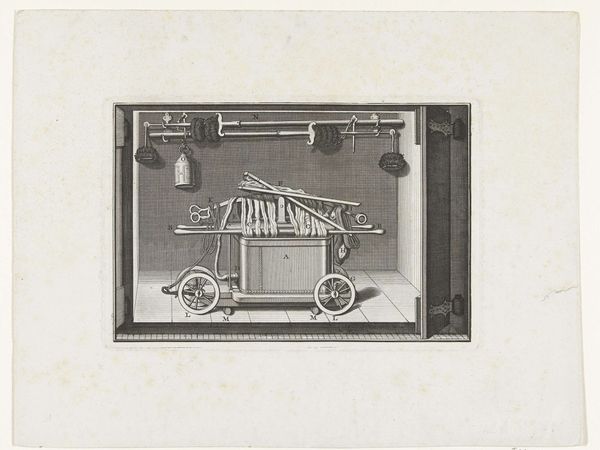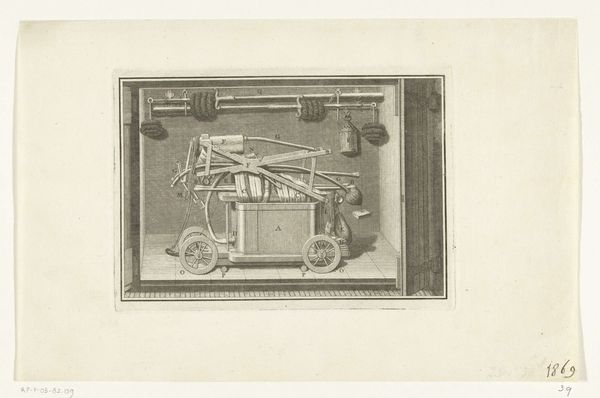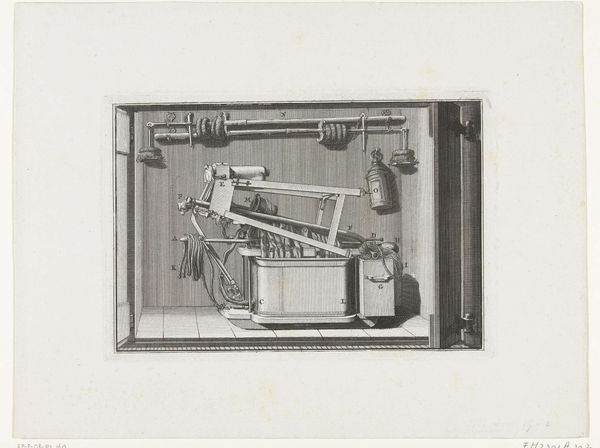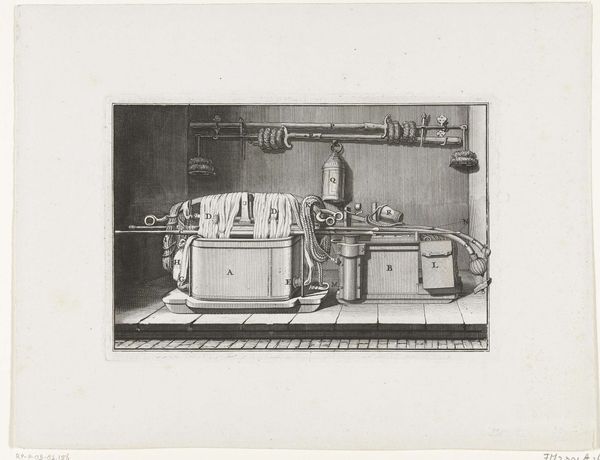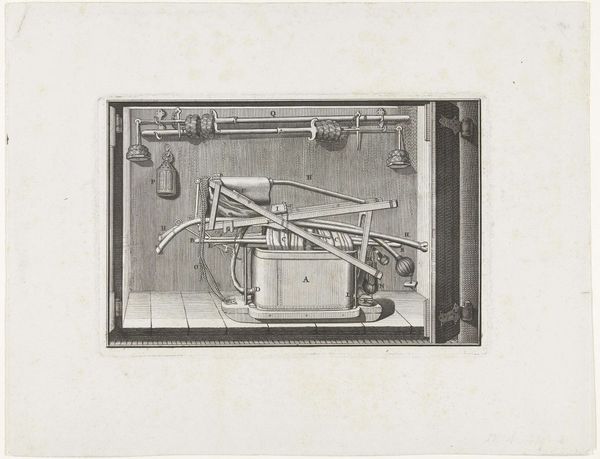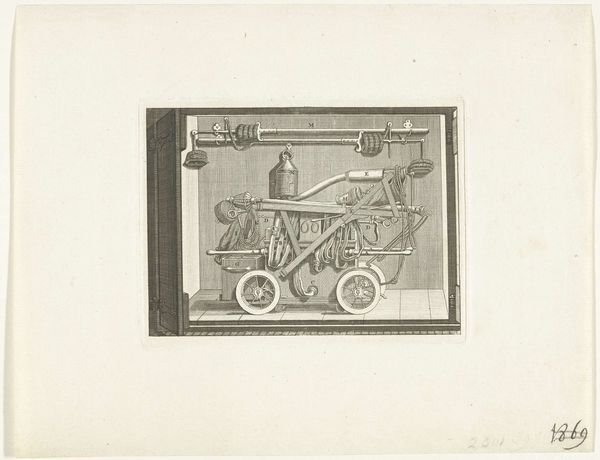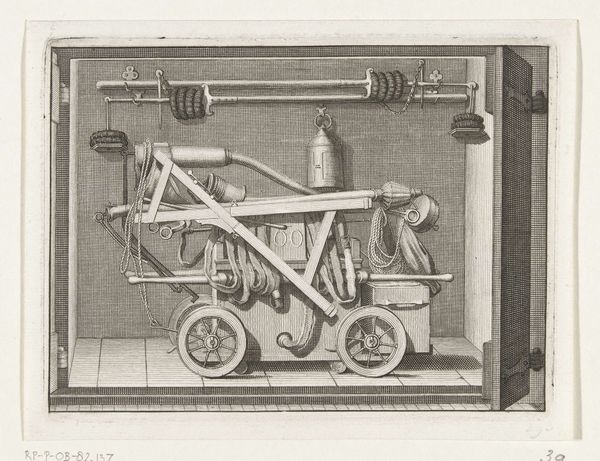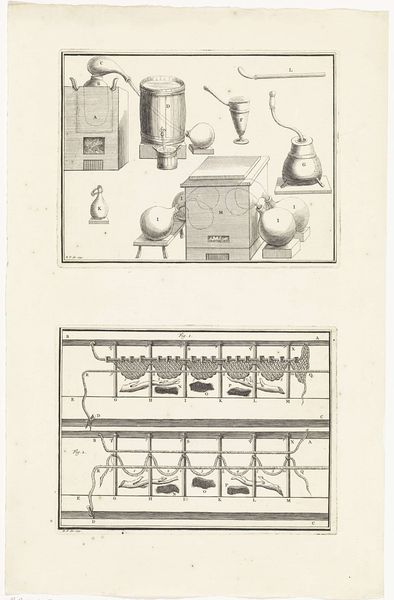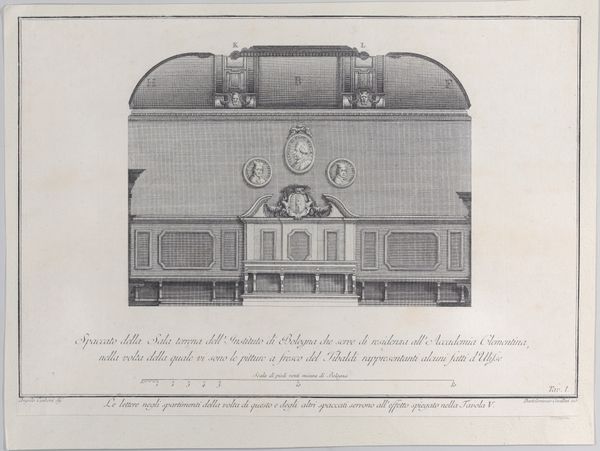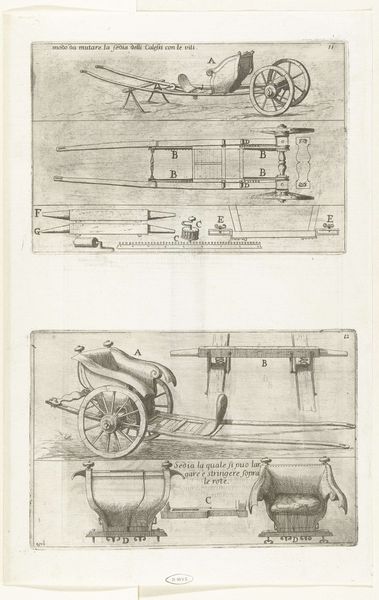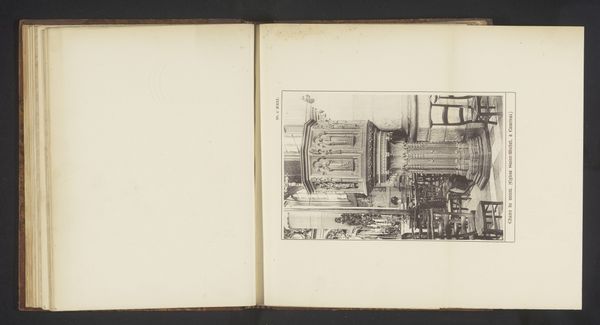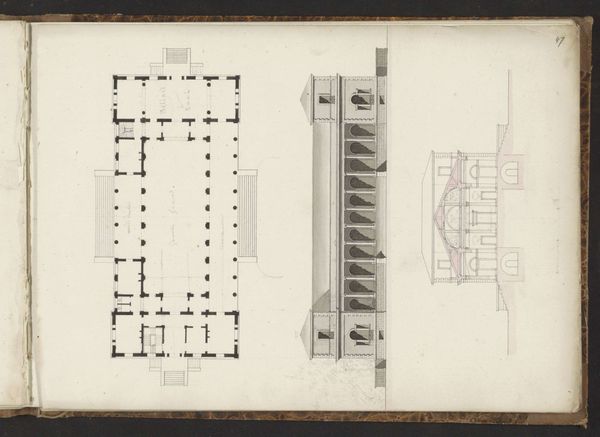
Hoe de slangbrandspuit en pompen in het brandspuithuisje opgeborgen dienen te worden na gebruik, ca. 1800-1825 Possibly 1800 - 1882
0:00
0:00
print, engraving
#
medieval
# print
#
geometric
#
line
#
genre-painting
#
history-painting
#
engraving
#
realism
Dimensions: height 137 mm, width 205 mm
Copyright: Rijks Museum: Open Domain
Curator: Here we have an engraving dating possibly from 1800 to 1825 titled "Hoe de slangbrandspuit en pompen in het brandspuithuisje opgeborgen dienen te worden na gebruik," which translates to "How the hose fire pump and pumps should be stored in the firehouse after use". It's currently held here at the Rijksmuseum. Editor: Well, my immediate impression is how strikingly utilitarian this image is! It’s so precise, almost diagrammatic. What purpose did it serve? Curator: Exactly. This wasn't intended as art, in the modern sense. Prints like these served a crucial function in disseminating knowledge. Before widespread literacy and photography, engravings provided visual instruction. It demonstrated how to maintain this newly innovated fire equipment. Editor: So, we’re seeing not just the objects, but also insight into early industrialization and the social efforts to improve firefighting capabilities. Curator: Absolutely! Notice the clear, delineated lines showing how each component is to be coiled, hung and where it belongs on the pump carts, designed for both function and education. Look, each object has a designated hanging point labeled with a clear ‘X.’ The firemen would have this up on the firehouse wall and use this key. It suggests also the creation of a more formally organized fire fighting force. Editor: The lines definitely lead you through the diagram logically. The geometric regularity in the design is impressive. Curator: Precisely. The act of organizing firefighting and ensuring tools were well kept meant saving lives and preserving property – something any municipality would value greatly. Moreover, the choice of engraving meant it could be reproduced easily and shared. Editor: It makes you think about the role of visual representation in shaping practices, ensuring accessibility, and perhaps standardizing processes across different regions or workshops at this historical point. There must have been quite the need and desire for that. Curator: Indeed! Examining this image leads us to appreciate not only technological innovations of the era but also the rise of visual communication for progress and public service. Editor: This piece gave me pause to really think about the mechanics of early firefighting systems, how artisans shaped materials, and the communal aspect of keeping our society safe through technology and instruction. It is not a romantic scene; its purpose is far greater than aesthetics.
Comments
No comments
Be the first to comment and join the conversation on the ultimate creative platform.
